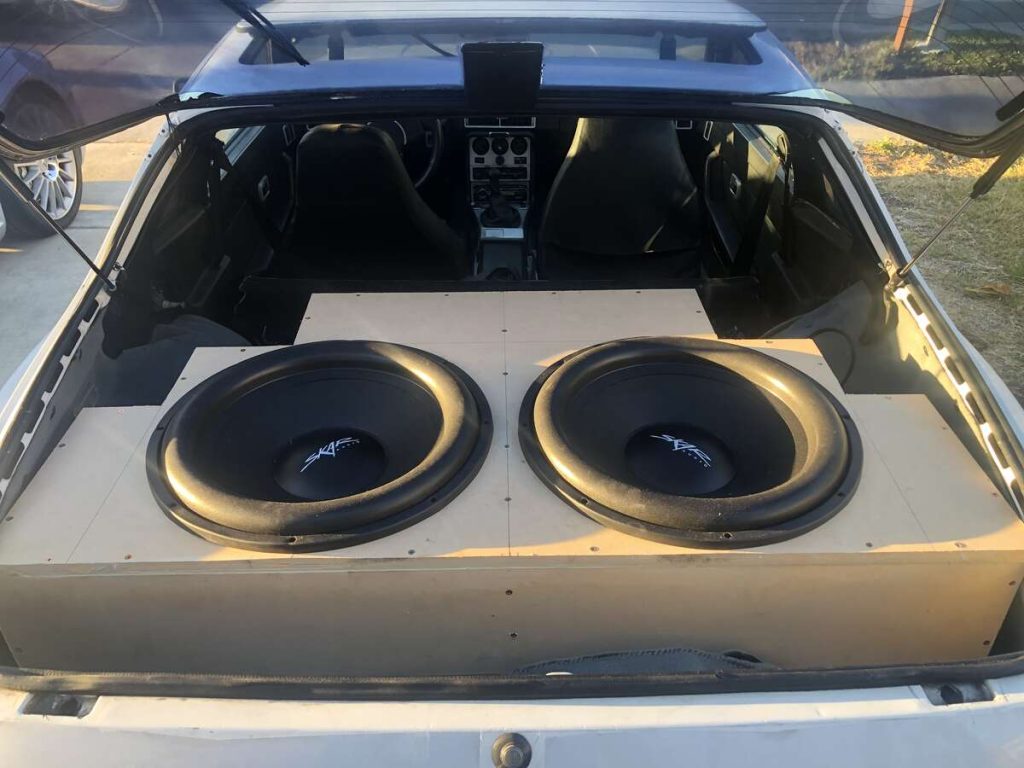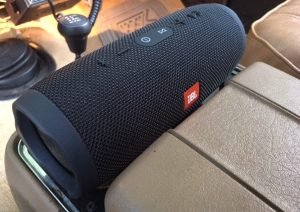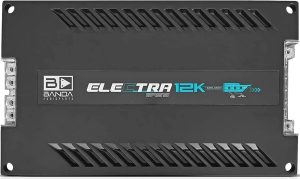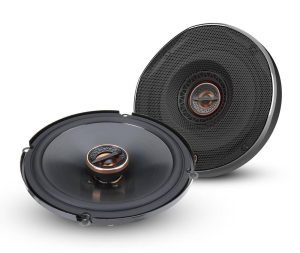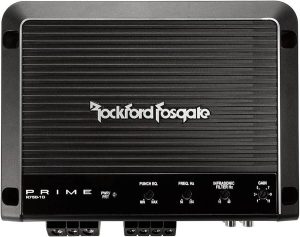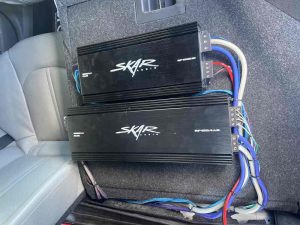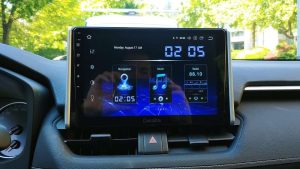When you dive into the world of car audio, choosing the right subwoofer and enclosure can make or break your sound system. The Skar SDR-18, an 18-inch subwoofer, stands out for its power and performance. But here’s the big question: does the size of the box really matter? Let’s break down the Skar SDR-18 box specs, explore why enclosure size is critical, and help you decide what works best for your setup. By the end, you’ll know how to optimize your audio experience with this beast of a subwoofer.
Contents
What Makes the Skar SDR-18 Special?
The Skar SDR-18 is a powerhouse in the car audio world. Designed for bass enthusiasts, it delivers deep, booming lows that transform your vehicle into a rolling concert hall. This subwoofer boasts a peak power handling of 1,200 watts and an RMS rating of 600 watts, making it ideal for those who crave intense sound. Its 2.5-inch voice coil and high-flux ferrite motor ensure durability and efficiency, even during long listening sessions.
However, a subwoofer’s performance doesn’t rely on specs alone. The enclosure—whether sealed or ported—plays a massive role in how the SDR-18 sounds. Let’s dive into why the box matters and how the right specs can elevate your audio game.
Why Box Size Matters for the Skar SDR-18
Think of the subwoofer box as the engine that drives your bass. A poorly designed enclosure can muffle sound or cause distortion, while the right one amplifies clarity and power. The Skar SDR-18 thrives in a box tailored to its specifications, and size is a key factor. Here’s why:
1. Air Space Affects Sound Quality
The internal volume of the box, measured in cubic feet, directly impacts how the subwoofer moves air. Too small, and the bass sounds tight but lacks depth. Too large, and you risk sloppy, boomy output. Skar Audio provides recommended box volumes for the SDR-18 to hit the sweet spot.
2. Sealed vs. Ported Enclosures
The type of box changes the game. Sealed boxes offer tight, accurate bass, perfect for genres like jazz or rock. Ported boxes, on the other hand, boost low-frequency output, ideal for hip-hop or EDM. The SDR-18 can shine in either, but the box size must align with the enclosure type.
3. Vehicle Space Constraints
Your car’s available space limits your box size. A massive enclosure might deliver killer bass, but if it eats up your trunk, it’s impractical. Balancing box size with your vehicle’s layout is crucial.
Now that you see why box size matters, let’s get into the nitty-gritty of the Skar SDR-18 box specs.
Skar SDR-18 Box Specifications
Skar Audio provides clear guidelines for building or buying an enclosure for the SDR-18. These specs ensure the subwoofer performs at its peak. Here’s what you need to know:
Sealed Box Specs
- Internal Volume: 2.5–3.0 cubic feet
- Benefits: Tight, controlled bass with excellent accuracy
- Best For: Listeners who prioritize precision over raw power
- Considerations: Requires more amplifier power to achieve high volume levels
A sealed box keeps the SDR-18’s sound crisp and punchy. It’s a great choice if you want bass that hits hard without overwhelming the mids and highs.
Ported Box Specs
- Internal Volume: 4.0–5.0 cubic feet
- Tuning Frequency: 30–34 Hz
- Benefits: Louder, deeper bass with enhanced low-frequency output
- Best For: Bass-heavy music genres like rap, dubstep, or trap
- Considerations: Larger size and potential for less precision
A ported box lets the SDR-18 unleash its full potential, delivering earth-shaking bass that rattles windows. However, it demands more space and careful tuning to avoid distortion.
Custom Box Considerations
If you’re building a custom enclosure, pay attention to materials and construction. Use ¾-inch MDF (medium-density fiberboard) for durability. Ensure airtight seals for sealed boxes and precise port measurements for ported ones. Skar’s website offers detailed plans, including cut sheets, to simplify the process.
How to Choose the Right Box for Your Skar SDR-18
Selecting the perfect enclosure depends on your goals, music preferences, and vehicle. Let’s break it down:
Step 1: Define Your Audio Goals
Ask yourself what you want from your system. Do you crave chest-thumping bass that turns heads? A ported box is your best bet. Prefer clean, balanced sound for a variety of genres? Go with a sealed box. Knowing your priorities guides your decision.
Step 2: Consider Your Music Taste
Your playlist matters. Hip-hop and EDM fans often lean toward ported enclosures for their low-end punch. If you listen to rock, classical, or acoustic tracks, a sealed box delivers the accuracy you need.
Step 3: Measure Your Vehicle’s Space
Before you commit to a box, measure your trunk or cargo area. A ported box’s larger size might not fit in a compact car. If space is tight, a sealed box or a custom-built enclosure could be the answer.
Step 4: Match Your Amplifier
The SDR-18 needs an amplifier that can handle its power requirements. For a sealed box, aim for an amp with 600–800 watts RMS. Ported setups may need closer to 1,000 watts to maximize output. Mismatched components can lead to underwhelming performance or damage.
Step 5: Test and Tune
Once your box is built or installed, test the system. Adjust the amplifier’s gain, crossover, and phase settings. For ported boxes, ensure the tuning frequency aligns with Skar’s recommendations. Fine-tuning makes a world of difference.
Common Mistakes to Avoid
Even with the right specs, mistakes can sabotage your setup. Here’s what to watch out for:
- Ignoring Box Volume: Building a box that’s too small or too large throws off the SDR-18’s performance. Stick to Skar’s recommended volumes.
- Poor Construction: Leaky seals or weak materials cause rattling and distortion. Invest in quality MDF and double-check your work.
- Wrong Tuning: For ported boxes, incorrect port length or diameter messes with the tuning frequency. Use Skar’s plans or consult a professional.
- Overpowering the Sub: Too much amplifier power can blow the SDR-18. Follow the RMS rating and set your amp’s gain conservatively.
- Skipping Break-In: New subwoofers need a break-in period. Play music at moderate volumes for 20–30 hours to loosen the suspension.
Avoid these pitfalls, and your SDR-18 will deliver the bass you’re chasing.
Benefits of Getting the Box Right
Nailing the box specs unlocks the Skar SDR-18’s full potential. Here’s what you gain:
- Superior Sound Quality: The right enclosure ensures clear, powerful bass that complements your music.
- Durability: A well-built box protects the subwoofer and extends its lifespan.
- Efficiency: Proper specs maximize output without overworking your amplifier.
- Customization: A tailored enclosure fits your vehicle and style, enhancing both sound and aesthetics.
Investing time in the box pays off with an audio experience that turns every drive into a vibe.
Pre-Built vs. Custom Boxes
Can’t decide between a pre-built box or a DIY project? Both have pros and cons:
Pre-Built Boxes
- Pros: Ready to use, designed to Skar’s specs, saves time
- Cons: Limited customization, may not fit unique vehicle layouts
- Best For: Beginners or those short on time
Skar Audio sells pre-built enclosures for the SDR-18, ensuring compatibility and quality. Check their website for options.
Custom Boxes
- Pros: Tailored to your vehicle, full control over design, potential cost savings
- Cons: Requires tools, skills, and time
- Best For: Audio enthusiasts or those with specific needs
Building your own box is rewarding if you have the know-how. Use Skar’s cut sheets and double-check measurements.
Enhancing Your Skar SDR-18 Setup
The box is just one piece of the puzzle. To get the most out of your SDR-18, consider these upgrades:
- Sound Deadening: Add sound-deadening mats to your vehicle’s doors and trunk to reduce rattles and improve bass clarity.
- High-Quality Wiring: Use OFC (oxygen-free copper) wiring and proper gauge cables to ensure efficient power delivery.
- Acoustic Treatment: Place polyfill in sealed boxes to enhance bass response without increasing box size.
- Professional Installation: If you’re unsure about setup, hire a car audio pro to optimize your system.
These tweaks take your SDR-18 from great to mind-blowing.
Does Size Really Matter?
So, does box size really matter for the Skar SDR-18? Absolutely. The enclosure’s volume, type, and construction shape the subwoofer’s sound, efficiency, and impact. A properly sized box—whether sealed or ported—unlocks the SDR-18’s potential, delivering bass that’s deep, clean, and powerful. Too small or too large, and you’ll miss out on what this subwoofer can do.
Before you start, clarify your goals. Love loud, booming bass? Build a ported box tuned to 30–34 Hz. Want tight, accurate lows? Opt for a sealed enclosure. Measure your vehicle, match your amp, and follow Skar’s specs. Whether you buy a pre-built box or go DIY, precision is key.
The Skar SDR-18 is a beast, but it needs the right enclosure to roar. Get the box right, and you’ll feel every beat, every drop, and every rumble. Ready to build your dream audio system? Grab your tools, pick your box, and let the bass take over.
